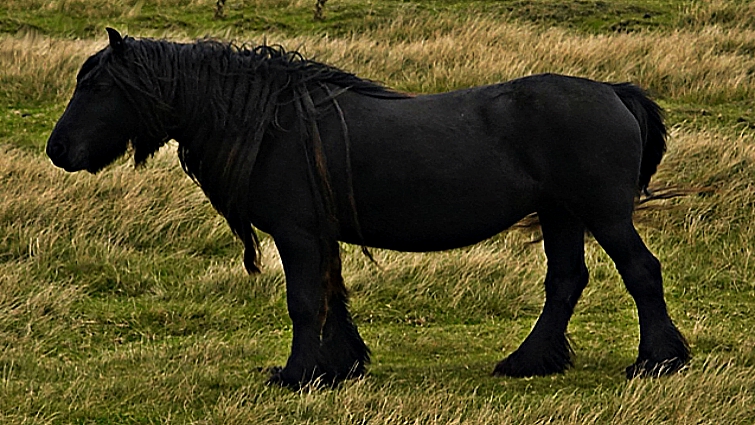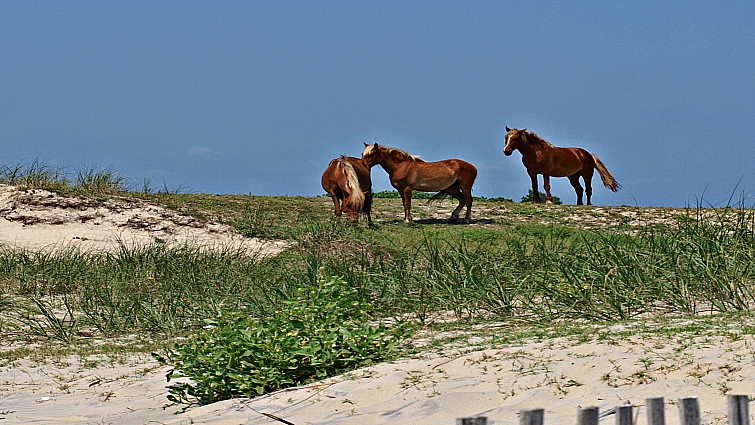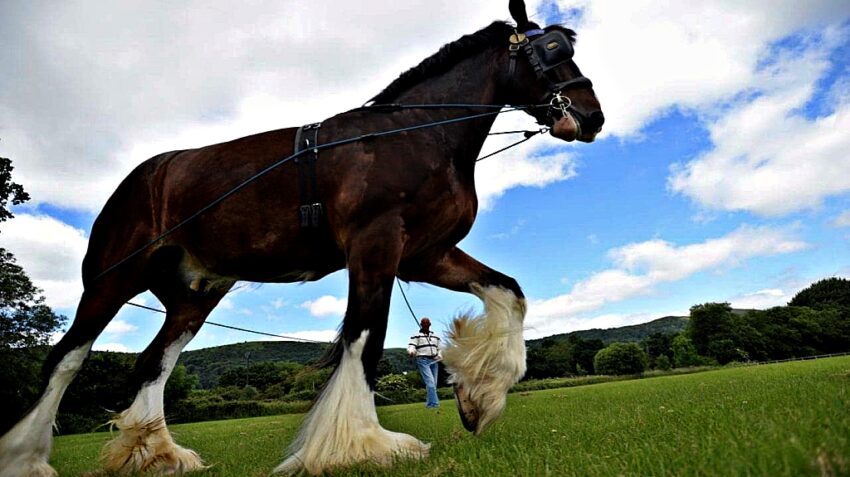Dales Pony: <3000. The Dales pony, a hardy breed native to England, was recently recategorized from “Endangered” to the more serious “Critical” status by the Rare Breeds Survival Trust, an organization that helps conserve and protect native British livestock breeds. Like the Exmoor pony, many Dales ponies were used for mining, and their numbers dwindled severely during and after the World Wars.
Colonial Spanish Horses: <2200. “Colonial Spanish” is not a breed in itself, but a group of about 15 breeds or strains that descend from Spanish stock brought to the United States, and which have had a strong influence on American gaited horses. Some of these breeds include the Spanish Barb, Carolina Marsh Tacky, and the Florida Cracker.

Canadian: <2200. The Canadian horse, also known as le cheval canadien, the French Canadian horse or “the little iron horse,” descends from French stock sent to Canada by Louis XIV in 1665, 1667 and 1670. They were extremely popular and did just about everything and everything from riding to pulling freight wagons. Their versatility and hardiness may have actually contributed to their downfall, though–because they were so reliable, many Canadian horses were exported to other countries or used as war mounts (including in the American Civil War). By 1880, they were near-extinct, though efforts in the 1970s helped to increase their numbers.

Shire: <2000. Polly the fox-hunting Shire and me. Shire horses come from stock used to carry knights into battle, but the breed was later adapted for farm work and hauling heavy loads over rough terrain–and to this day, some Shires are used in the forestry industry where mechanized vehicles cannot go. The breed nearly went extinct in the 1950s and ’60s, but today they are more popular than they have been in decades despite their small numbers.

Hackney Horse and Hackney Pony. <1500 The Hackney horse and pony are distinct types, proportioned differently. Hackney ponies are one of the few breeds developed completely in a controlled environment. Christopher Wilson wanted a “roadster” bred for style and stamina, and developed the Hackney pony from Hackney horse stallions and Fell ponies in the 1800s. Hackney ponies have had a strong influence on the “modern-type” Shetland pony.

